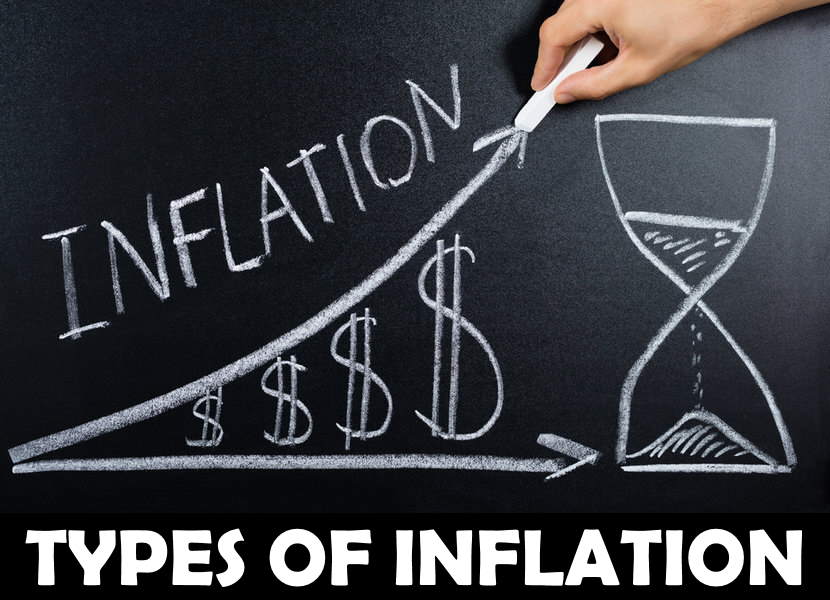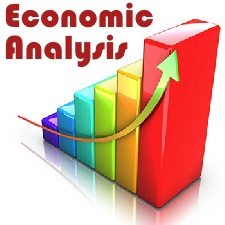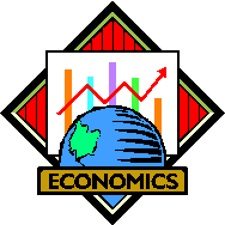What are the Degrees or types of Inflations?
Table of Contents
- 1 Degrees (or) Types of Inflation
- 1.1 1. Inflation on the basis of the rate of increase in price level
- 1.2 2. Inflation based on the extent of coverage of price
- 1.3 3. Inflation based on the extent of governmental influence and efforts in controlling inflation
- 1.4 4. Inflation in terms of the circumstances when the price level increases
- 1.5 5. Inflation on the basis of time
- 1.6 6. Inflation based on the factors that cause inflation
- 2 Infographic on 20 different types of Inflation
Degrees (or) Types of Inflation
Inflation is of different types. The following are the various types of inflation. These types of inflation are classified on different basis:

1. Inflation on the basis of the rate of increase in price level
Over a period of time, inflation can be classified as Creeping inflation, Walking inflation and Running inflation.
1. Creeping inflation
In this type of inflation, the price level increase at a very slow rate over a period of time. In the early stage of development, the developing countries generally will experience this type of inflation.
2. Walking inflation
This refers to the rise in the price level at a higher rate than the creeping inflation. It is estimated that during this period the price level will increase by 5% per annum. Unless this is controlled, it will lead to running inflation.
3. Running inflation
The rate at which the price level increases in this period is very high, may be even above 10%. This increase in price level takes place within a short span of time.
2. Inflation based on the extent of coverage of price
Based on the extent of coverage of price, inflation can be classified as Comprehensive inflation and sporadic inflation or sectoral inflation.
1. Comprehensive inflation
This refers to the price rise which affects all commodities without any exception.
2. Sporadic inflation or sectoral inflation
This refers to the rise in prices affecting only a particular industry or sector.
3. Inflation based on the extent of governmental influence and efforts in controlling inflation
Based on the extend of Governmental influence and efforts in controlling, inflation can be classified as Open inflation and Repressed inflation.
1. Open inflation
This is experienced when the government does not interfere in the process of rising prices. It may allow the market forces to interact and control the inflationary rise in prices. The automatic flexibility of market forces over a period of time will bring in stability.
2. Repressed inflation
This refers to the interference by the government in controlling the inflationary pressure in the economy. The market forces are tampered by the government mainly to regulate the prices. Eg: price control and rationing for essential commodities preventing the price from going up.
4. Inflation in terms of the circumstances when the price level increases
In terms of circumstances when the price level increases, inflation can be classified as Partial and full inflation.
1. Partial inflation
Till the full employment is reached, every increase in price level will be an incentive to the producers to produce more and thereby along with increase in money supply, the production will also go up. This period witnesses a slow increase in price level. This is called as partial inflation.
2. Full inflation
After the full employment level, if the money supply continues to increase, then there is no possibility of increasing the production and so only the price level will go up. This is called full inflation.
5. Inflation on the basis of time
On the basis of time, inflation may be classified as Peace-time inflation, War-time inflation and Post-war time inflation.
1. Peace-time inflation
This will be experienced during the period when the government tries to develop the country through planning. During this period, the government expenditure will increase depending upon the nature of government commitment in executing the plans.
2. War-time inflation
It is the result of war in an economy. The government may divert all the resources towards the wartime industry from peace time industry. This will mean the production of certain goods and services will go down causing scarcity. Further, to meet the expenditure during war, the government will also increase the money supply which will not be followed up by a corresponding increase in the production of goods and services causing thereby inflation.
3. Post-war inflation
It is the result of pent-up demand. After the war, the government normally relaxes the controls and other restrictions and this leads to increased demand for every type of good causing a temporary shortage until the industries are able to increase their production.
6. Inflation based on the factors that cause inflation
Based on factors of cause, inflation can be classified as Currency inflation, Credit inflation, Profit-induced inflation, Wage-induced inflation, Mark-up inflation, Ratchet inflation, Stagflation and Imported inflation.
1. Currency inflation
This is caused mainly by the excess supply of money over the demand for money and the available goods and services. As there is scarcity for goods and services, in such a situation, the price level will go up.
2. Credit inflation
Sometimes, the government may prefer to keep the money supply constant, but encourage the expansion of credit by the banking system. This may be needed to lighten the rural indebtedness or to expand production or to mobilise the financial resources required for implementing the plans.
3. Profit-induced inflation
This type of inflation is found when the government does not allow the prices to fall below a particular level to protect the interests of the producers. But the cost of production may also be going down simultaneously and the producers may be reaping good profit.
4. Wage-induced inflation
The power of trade union in these days is very strong, with which they fight with the employers to get better wages, allowance, etc. This in turn will increase the cost of production. To meet this cost increase, the producers will increase the prices contributing to inflation.
5. Mark-up inflation
This is caused by the monopoly practices in a country. This type is caused because of the higher margin of profit fixed by the monopolists over their costs of production. This markup is so high that the price level is automatically affected leading to inflation.
6. Ratchet inflation
This is another type in which the prices in certain sectors are allowed to go up and in the other sectors never allowed to come down. Since the prices are allowed to move only in one direction and not both ways, this type is called ratchet inflation.
7. Stagflation
This is basically a Keynesian concept. It refers to the situation in an economy when the price level increases along with the increase in unemployment and stagnation in the development activities. In fact this is the worst type of inflation which cannot be easily controlled.
8. Imported inflation
This is caused in an economy when it relies heavily on imports of goods from other countries, where there is inflation. The inflation in the exporting countries will slowly spread over the importing country thereby even without the domestic causes, inflation will be experienced by the importing countries.


